Museums
LACMA goes Hollywood
May 13, 2010
In February, the Los Angeles County Museum of Art hosted a rare appearance by Clint Eastwood.
The packed, invitation-only event—featuring a screening of an Eastwood documentary, followed by a question-and-answer session with the actor/director—was a coup for the museum.
But LACMA Director Michael Govan claims no credit for the Eastwood “get.”
“There’s no way in the world I could have gotten Clint Eastwood to come on my own,” says Govan. Instead, he’s quick to give top billing to the museum’s board—specifically, co-chair Terry Semel. The former Warner Bros. chief has enjoyed a two-decade friendship with Eastwood, releasing 20 of the actor’s films at the studio.
Beyond the evening’s glitz, the Eastwood event was a stunning illustration of a new L.A. story unfolding at LACMA. The county’s premier art museum is tapping the town’s most famous hometown industry by increasingly casting Hollywood luminaries for its board of trustees.
Given its home in the entertainment capital, Semel says, LACMA embraces film as a “serious art, a real art,” one that, along with photography, should play an increasingly important role in the museum’s identity. That, he says, “is critical.”
The hope, of course, is also that the tighter ties between LACMA and the entertainment industry will lead not only to a new burst of creative energy but also to a new pool of donors beyond the traditional worlds of real estate and finance. LACMA board members each commit to raising or giving $100,000 per year.
Besides Semel, who also formerly headed Yahoo!, the 59-member board of trustees includes singer Barbra Streisand, producers Brian Grazer and Steve Tisch, Sony Pictures
Chairman Michael Lynton and songwriter Carole Bayer Sager, as well as other top-drawer execs in the worlds of media, sports marketing and video games.
“You put a few major entertainment figures on the board and your Rolodex is just so rich,” says Bayer Sager of the benefits to LACMA. “It’s useful in getting dynamic people who care about the arts.”
Bayer Sager, who joined the board last November and is married to Semel’s former Warner Bros. partner, Bob Daly, says she recently began developing a series of possible public service spots aimed at boosting LACMA attendance, especially among the hard-to-reach younger crowd.
Still in the design phase, she says the first installment—“Have You Seen the Lights at LACMA?”—would feature the iconic “Urban Lights” streetlamp installation along Wilshire Boulevard.
Although the marriage of Hollywood and LACMA seems like a natural fit, the county’s museum hierarchy failed for years to reach out to the entertainment community.
“My New York friends were wondering how come we had so few people on the board from Hollywood and the entertainment industry,” recalls Govan, who took over in 2006.
Although efforts had begun before his arrival to build a better roster of industry powerhouses, Govan says he too wondered why more weren’t being enlisted. He said he was determined to bring more diversity and youth to the board.
In years past, LACMA’s relationship with Hollywood seemed not to be particularly strategic. Suspense actor Vincent Price, a collector, was a trustee in the early 1960s before
LACMA moved to its present campus. Steve Martin joined the board in the late 1980s. That may be why the comedian and art collector, who continues to support the museum, was able to roller skate through LACMA galleries and past a pair of David Hockney paintings in the 1991 film “L.A. Story.”
The new infusion of Hollywood players may prove especially useful as LACMA tries to heal wounds that developed last year when Govan announced that the museum was planning to end its screenings of foreign and domestic films, after a 40-year run for the program. Audiences and revenues were dwindling, he said.
The ensuing outcry—including an open letter from director Martin Scorsese—put Govan on the defensive. The Hollywood Foreign Press Association and Time Warner Cable stepped up to sponsor this year’s film series.
Govan has said that the museum would like to raise at least $5 million to make the program sustainable long-term, and Semel has vowed to do his best to make that happen. Last fall, producer Irwin Winkler hosted what Govan calls a “friend-raising”—rather than fundraising—event at which the museum director sought ideas about how to improve the film program from industry veterans.
And then there’s Semel’s pal, Eastwood. On the night of LACMA’s event in his honor, Eastwood vowed that he’d “reach into [his] pocket, too.” And that’s the kind of role modeling LACMA undoubtedly is happy to see.
Posted 5-13-10
New outside digs at museum
April 22, 2010
The Natural History Museum is, in its words, getting “a new front yard”—3.5 acres of open-air habitats and exhibits designed to attract local wildlife and connect visitors with Southern California’s unique outdoor experiences.
“We saw a chance to put nature back in natural history,” museum president and director Dr. Jane Pisano said during a media event to announce the ambitious $30-million project, scheduled to open in the Summer of 2011.
Tentatively called “North Campus,” the outdoor area will increase the museum’s exhibit space by 50% through the creation of 11 “wilderness” areas with such names as Pollinator Garden, Living Wall, Urban Edge, Shadow Garden and Get Dirty Zone.
The goal is to replicate a series of distinct natural environments that draw birds, butterflies, lizards and other wildlife while becoming educational laboratories for visitors of all ages. (For a detailed list of North Campus features, click here).
“We can teach people lessons they can easily take to their backyards or schoolyards,” Pisano said in an interview following the media presentation.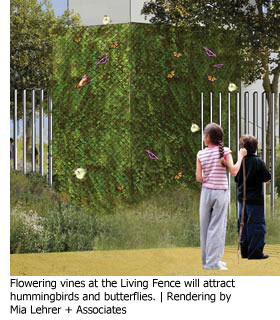
In addition to the outdoor exhibits, a 140-foot bridge—inspired by a whale skeleton exhibited inside the facility—will span overhead, allowing visitors to walk from the street directly to the entrance of the county-run museum off Exposition Boulevard. A stop will also be built in front of the museum for the new light-rail Expo Line, which is now under construction.
Funding for the project includes $10 million from L.A. County to build a two-story garage that will free up more space for the habitats.
North Campus is the latest piece of the Natural History Museum’s ongoing rebuilding and transformation project leading up to its 2013 Centennial. Called “NHM Next,” the initiative started with the dramatic restoration of the museum’s 1913 building, completed last year.
The Beaux Arts building was the first dedicated museum in L.A., so its restoration included a state of the art seismic retrofit to strengthen the un-reinforced brick walls.
Construction crews also restored the building’s iconic dome, covered with a stunning display of more than a million yellow and green ceramic tiles. Meanwhile, artists recreated the building’s gargoyles and topped the east wing with a new 6-foot eagle to replace the original bird destroyed in a 1920s earthquake. The grandson of the creator of a stained-glass skylight oversaw the restoration of the multi-hued piece.
In July, the building’s first new permanent exhibit is set to open, a ground-breaking look at 65-million years of the “Age of Mammals,” the first permanent exhibit to link geology and climate change over the entire sweep of mammalian history.
Scheduled to open in 2011 will be “Dinosaur Mysteries: Past & Present,” a mega-exhibit exploring how dinosaurs lived and why they died. The stars of that show will be the world’s only grouping of a baby, child and adult T. rex.
Come December, 2012, just before the museum’s centennial celebration, a third major exhibit will debut—“Under the Sun: Los Angeles, California and the World.” It will chart local cultural and natural history with hundreds of artifacts and artworks.
While waiting for the new exhibits, museum goers have had plenty of offerings in the museum’s 1920s buildings that have remained open, including the beloved dioramas of wild animal habitats of Africa and North America, and a “Thomas the T. rex” exhibit showing the young adult dinosaur excavated recently in Montana. To plan a visit, check out the museum’s updated website.
A show of wings at L.A. museum
April 1, 2010
The California Dogface is getting ready for its close up. So are the Mourning Cloaks, Giant Swallowtails and Red Admirals.
A cast of hundreds of moths and butterflies are about to alight, oh so delicately, at L.A. County’s Natural History Museum when the annual Pavilion of Wings opens April 11. More than 40 different species will star in the 5-month show, held in a giant tent on the museum’s south lawn.
Last year’s exhibition attracted more than 65,000 visitors during its run. Tickets cost $3 for adults, $2 for seniors and students and $1 for children ages 5-12. Visitors under 5 are admitted for free.
For organizers, there’s no winging this kind of show, says museum entomologist Brent “the Bug Guy” Karner, the exhibit’s impresario for the past 10 years. He says it takes months of intricate planning, including a lot of overnight shipments and preparation for the show’s final act—the appearance of hundreds of ravenous spiders.
Logistics for this one started in January, when Karner and his crew of naturalists placed orders from “butterfly farms” in Texas, Florida and California. The farms attract butterflies and moths by planting flowers, shrubs and trees on which the various species lay eggs. Farmers then nurse them through the early stages of life: egg, caterpillar and chrysalis, which is the immobile, hard-coated pupa stage before adulthood.
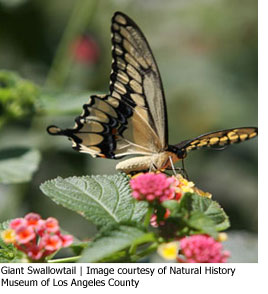 Beginning this week, boxes of chrysalises will begin arriving in overnight deliveries. Karner’s entomologists will carefully place the chrysalises in mesh cages indoors until they metamorphose into adults and are ready to be transferred to the tent, filled with dozens of plants and flowers that attract the flying beauties.
Beginning this week, boxes of chrysalises will begin arriving in overnight deliveries. Karner’s entomologists will carefully place the chrysalises in mesh cages indoors until they metamorphose into adults and are ready to be transferred to the tent, filled with dozens of plants and flowers that attract the flying beauties.
Because moths and butterflies don’t survive long as adults—most die after 3 to 4 weeks—Karner keeps weekly shipments coming throughout the show’s run, ending in September.
To ensure a big opening day crowd, he also orders shipments of live adults, which are sealed in envelopes packed inside boxes. “So long as you send them overnight,” Karner says, “they’ll all be fine on our end.”
All of the species are from the U.S., with about half native to California. The California dogface, so called because of a white mark on its wings that looks like a canine’s mug, is the official state insect. Among this year’s newbies is the Small Postman, a tropical pollen-eating butterfly from south Texas. Karner says he’s also increased the quotient of moths, which he believes deserve equal billing. “Butterflies are just day-flying moths,” Karner sniffs. They include Hawk moths, who hover and dart like birds of prey.
Karner and the museum staff use the moths and butterflies to teach about insect evolution and to explore the relationships between insects and the plants they eat as caterpillars and use as breeding grounds. “Those lessons make the experience at our butterfly pavilion much deeper than most others,” he says. “It’s pretty darned cool.”
Come September, one last drama of nature will unfold in the tent and out of public view as the fall spider show prepares to move in. The winged stars quickly become arachnid lunch. “The spiders take care of all my butterflies,” says Karner. “Unfortunately, people don’t get to see the massive onslaught.”
Maybe that’s just as well.
Posted 4-01-10
LACMA: A picture of progress
May 13, 2009
It’s called “The Transformation”—a small catchphrase for the hugely ambitious, two-phase expansion of the Los Angeles County Museum of Art.
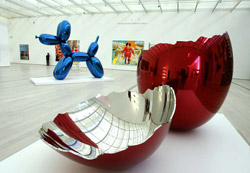 Already, 60,000 square feet of gallery space has been added with the opening in 2008 of the Broad Contemporary Art Museum (BCAM), designed by Pritzker Prize-winning architect Renzo Piano. What’s more, construction is now finished on an open-air pavilion and a concourse that connects the east and west sides of LACMA’s 20-acre mid-city campus.
Already, 60,000 square feet of gallery space has been added with the opening in 2008 of the Broad Contemporary Art Museum (BCAM), designed by Pritzker Prize-winning architect Renzo Piano. What’s more, construction is now finished on an open-air pavilion and a concourse that connects the east and west sides of LACMA’s 20-acre mid-city campus.
Another hallmark of the transformation’s first phase: the installation of stunning public artworks, including Topanga Artist Chris Burden’s Urban Light, a neatly aligned collection of 202 vintage Los Angeles street lamps that has drawn crowds of locals and tourists alike.
All this was financed by $201 million in donations—a figure that LACMA officials say surpassed their fundraising goal by $51 million.
 So now it’s on to phase two, which is well underway. The centerpiece this time is the Lynda and Stewart Resnick Exhibition Pavillion, also designed by architect Renzo Piano. The Resnicks donated $55 million in funding and artwork to construct the new exhibition space, located just north of the BCAM.
So now it’s on to phase two, which is well underway. The centerpiece this time is the Lynda and Stewart Resnick Exhibition Pavillion, also designed by architect Renzo Piano. The Resnicks donated $55 million in funding and artwork to construct the new exhibition space, located just north of the BCAM.
The single-story pavilion, scheduled for completion in the summer of 2010, will feature a twenty-foot ceiling and no interior walls, creating a flexible floor plan that can accommodate any kind of exhibition.
Also included in this phase of construction will be the complete rehabilitation of LACMA West, the 300,000 square-foot former May Company department store, built in the late 1930s as a gateway to the historic Miracle Mile.
Since the earliest stages of planning, Supervisor Yaroslavsky has been closely involved with LACMA’s transformation, championing the decade-long project in philanthropic and government circles. He is widely considered to be the board’s most ardent advocate of the arts.
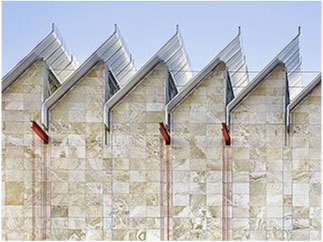 “LACMA’s expansion has been—and will continue to be—a boon for all of Los Angeles,” says the supervisor, whose district includes the museum. “Whether through its architecture, its collections, its outdoor sculptures or its stellar public programs, LACMA is creating a museum in a park that welcomes every resident of Los Angeles County and millions of visitors from throughout the world.”
“LACMA’s expansion has been—and will continue to be—a boon for all of Los Angeles,” says the supervisor, whose district includes the museum. “Whether through its architecture, its collections, its outdoor sculptures or its stellar public programs, LACMA is creating a museum in a park that welcomes every resident of Los Angeles County and millions of visitors from throughout the world.”
For pictures and more information on LACMA’s transformation, click here.




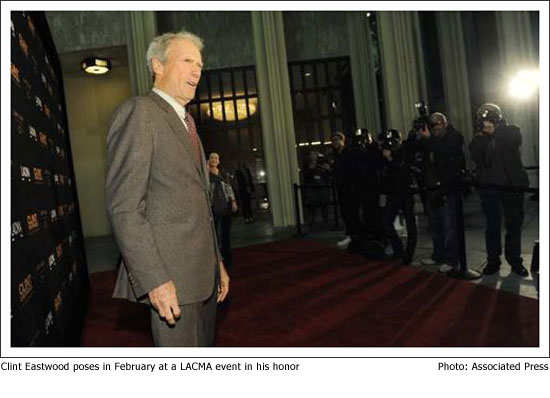
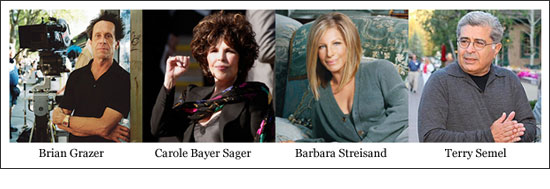
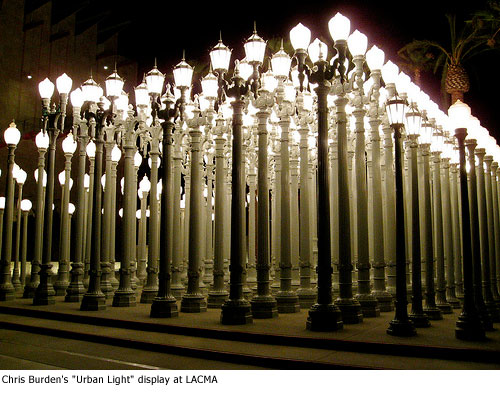
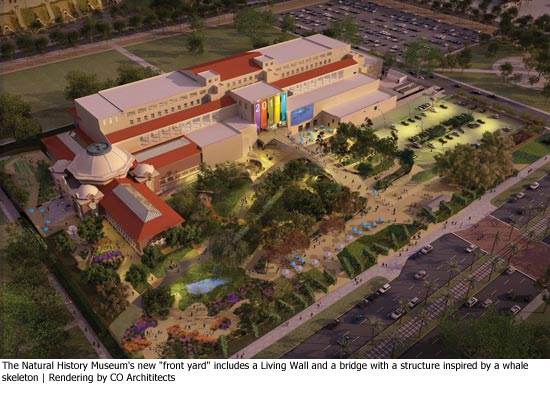
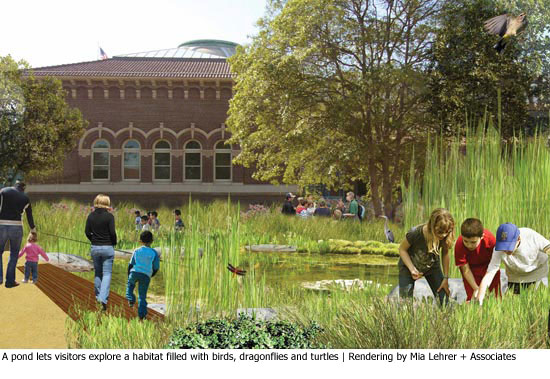
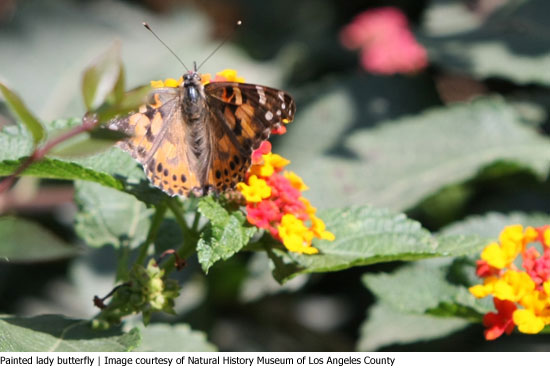










 405 bridge work causes a stink
405 bridge work causes a stink